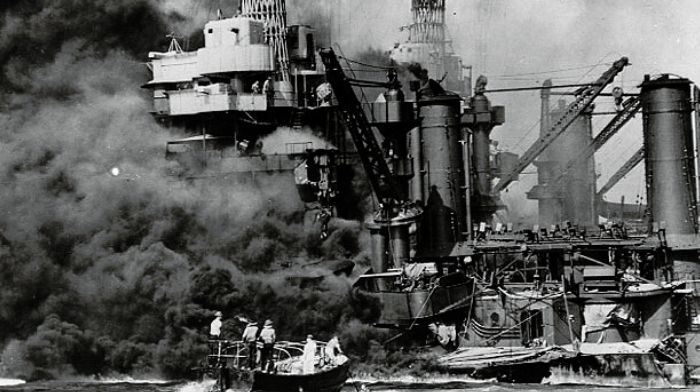
By Carl M. Cannon For RealClearPublicAffairs
On Dec. 7, 1941 — 80 years ago today — war had been raging in Europe for two years, but U.S. public opinion had not reconciled itself to joining the fight, despite the interventionist impulses of a popular American president.
Eleven days earlier, the United States had presented Japan with a 10-point statement outlining a desire for peace and a roadmap for future negotiations. Japan’s government accepted it and said it would respond in kind.
Instead, that day, the Japanese Imperial Navy secretly dispatched an armada that included six aircraft carriers and more than 400 warplanes across the Pacific Ocean. The invading force was led by Adm. Isoroku Yamamoto. (Yamamoto, who did not survive the war, never said after the attack on Pearl Harbor that he feared Japan had “awakened a sleeping giant” — that’s a Hollywood invention — but in some ways Americans were asleep.)
In any event. Yamamoto had studied at Harvard and served as a naval attaché in Washington. D.C., and knew the strategic value of the U.S. Pacific Fleet based in Hawaii.
Gen. Douglas MacArthur had expressed confidence he could repel any Japanese invasion of the Philippines. In Hawaii, Adm. Husband E. Kimmel spent Dec. 6, 1941, a Saturday, wondering if he should order the U.S. Navy 7th Fleet to disperse from Pearl Harbor.
The USS Enterprise, the fleet’s biggest aircraft carrier, had been due back in port by then, but bad weather had delayed her: As the winter sun slipped down on the horizon, the ship was still 250 nautical miles away — out of harm’s way, as it would turn out.
In Washington, President Roosevelt had a full Dec. 6 schedule of his own. He began his day with back-to-back White House meetings with Supreme Court Justice William O. Douglas and Budget Director Harold D. Smith.
FDR then had lunch with trusted aides Harry Hopkins and Grace Tully and met with Secretary of State Cordell Hull and Attorney General Francis Biddle in the afternoon. He discussed the war in Europe with Lord Halifax, the British ambassador, at 4:50 p.m. and kept a 6 p.m. doctor’s appointment before receiving philanthropist Vincent Astor for a pre-dinner cocktail.
Thirty-four guests attended dinner at the White House that night, hosted by the president and first lady Eleanor Roosevelt. Violinist Arthur LeBlanc provided the entertainment. Afterward, with help from Hull, the president dictated a cable to Emperor Hirohito, whom the Japanese people considered a deity, imploring him to choose peace.
To Eleanor, FDR quipped, “The son of man has just sent his final message to the son of God.” Despite Franklin Roosevelt’s irreverent wisecrack, the cable the president sent on Dec. 6, 1941, was expressive and deeply respectful.
“I address myself to Your Majesty at this moment in the fervent hope that Your Majesty may, as I am doing, give thought in this definite emergency to ways of dispelling the dark clouds,” FDR wrote. “I am confident that both of us, for the sake of the peoples not only of our own great countries but for the sake of humanity in neighboring territories, have a sacred duty to restore traditional amity and prevent further death and destruction in the world.”
Roosevelt was not naïve. He knew that Japan still occupied Manchuria, that thousands of Japanese troops had been pouring into Indochina, and that Australia was anticipating an attack.
What the president didn’t know was that Yamamoto’s fleet had already crossed the Pacific and was amassed near Pearl Harbor.
Later that night, however, the president was given an intercepted message from Tokyo to the Japanese Embassy in Washington titled “Final Communication to the United States.” The cable did not declare war or call for the breaking of diplomatic relations with Washington.
But its tone was menacing, and the U.S. Navy lieutenant who delivered the decoded document to the White House recalled the commander-in-chief’s terse reaction: “This means war,” Roosevelt said simply.
Syndicated with permission from RealClearWire.
Carl M. Cannon is the Washington bureau chief for RealClearPolitics. Reach him on Twitter @CarlCannon.
